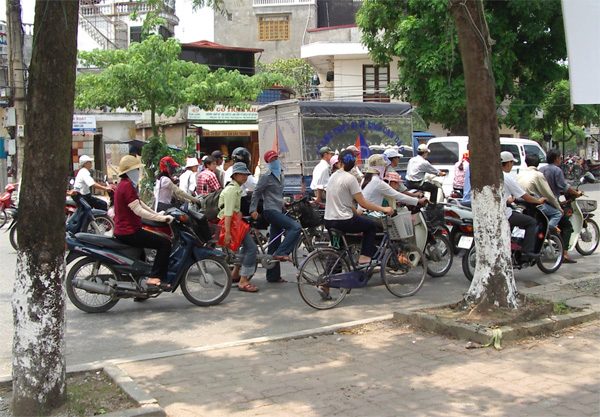
Addressing the catastrophic cost of injury
With a population of 85.8 million, Vietnam is one of the most populous countries in the world, but the cost of healthcare is crippling. Our focus is on changing policy and making healthcare affordable and accessible - a basic human right. Ha Nguyen is a PhD student working with The George Institute for Global Health and based in Vietnam. Every day, injuries claim almost 100 lives and cause hundreds of thousands of hospital admissions.
"Vietnam has experienced a shift from communicable to non-communicable diseases and injuries. Ten years ago, when we conducted the first national survey, injuries were the leading cause of death among children. Injuries also caused the largest number of years of potential life lost, twice larger than those due to non communicable diseases and six times larger than those due to communicable diseases. To date, injuries remain a significant issue in my country and I want to do something to address this problem.
Every day, there are about 40 deaths due to road traffic crashes; every summer hundreds of children are drowned. Increasing efforts in injury prevention are desperately needed and I'm working on this area with an expectation that we can better control this issue in Vietnam."
Catastrophic costs to families
Globally, injuries claim more lives than heart disease and malaria and are one of the leading, but often neglected, causes of death and disability. Investigating the impact of injury in his home country of Vietnam, Ha Nguyen revealed the catastrophic costs of recovering from an injury for many families.
"We wanted to confirm the true cost of recovering from an injury in Vietnam where healthcare costs are paid directly from the income of patients and their families," he said.
"Just over a quarter of people in the study experienced catastrophic expenditure due to their injuries, where at least 40% of their income was spent on medical expenses and this leads to financial hardship."
Ha reviewed almost 1,000 cases of injuries to find the average cost of being hospitalised around US$365, which equates to an average six-month income.
Burns, falls and road traffic injuries were the most common and most costly injuries, due to a longer hospital stay and more severe injuries.
The 2010 Vietnam Living Standard Survey showed that a typical household spends 10% of their non-food expenditure on healthcare. In Ha's study, only 25% were covered by insurance for their treatment costs, and the remainder were forced to pay for direct medical costs. The complete findings were published in Injury.
An unrecognized public health issue
Professor Rebecca Ivers, of The George Institute, said injury was an unrecognized problem in low-income countries, which were generally focused on the high rates of infectious disease they face.
"It is important not to miss injury as a key public health challenge for Vietnam and that is why we conducted this research to clearly show the impact of injury on Vietnamese people," she said.
"If you have a devastating injury and the family has to look after you, there's a potential to push them into poverty."
Preventing injury with high-quality evidence
Ha says the study is fundamental to improving injury rates in Vietnam. "It's vital that we provide high-quality evidence for the Government to make well-informed decisions to prevent injury and help reduce the costs associated. There are a substantial number of households at risk of impoverishment due to road traffic injury, falls, burns and other injuries."
To help Vietnamese cope with the financial consequences of injury, Professor Ivers and Ha suggest two key focus areas. One is an expanded health insurance scheme and the second is a focus on prevention via programs that aim to reduce the incidence and severity of falls and road crashes. Both would likely result in significant savings for the family as well as society.
Closing the knowledge gap
Professor Ivers' team will look to adapt this study in India, where data on the burden of injury is also lacking. Ha will further investigate the burden of disability following injury and establish more accurate measurements of the burden of injury for low-income countries, which generally use high-income countries as a benchmark.
"There is a clear need to collect injury outcome data from low and middle income countries to inform valid estimates of injury burden for local uses and to further improve global burden estimates. These projects will be critical in closing this knowledge gap," Professor Ivers said.
This is the first time accurate injury weightings for low and middle-income countries will be established. The projects will have very important and wide-ranging implications for injury research on a global level and for local health service delivery in India.

